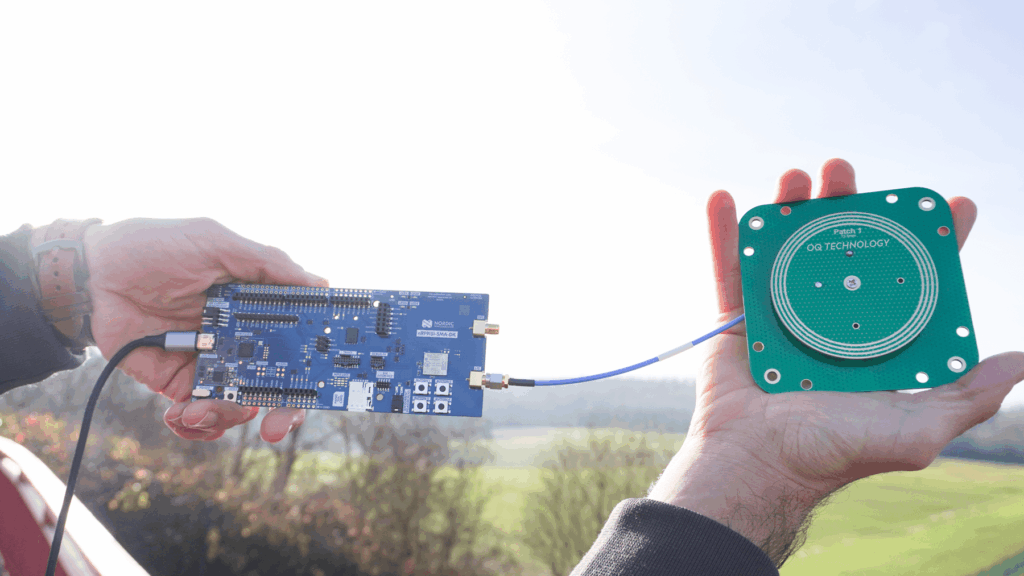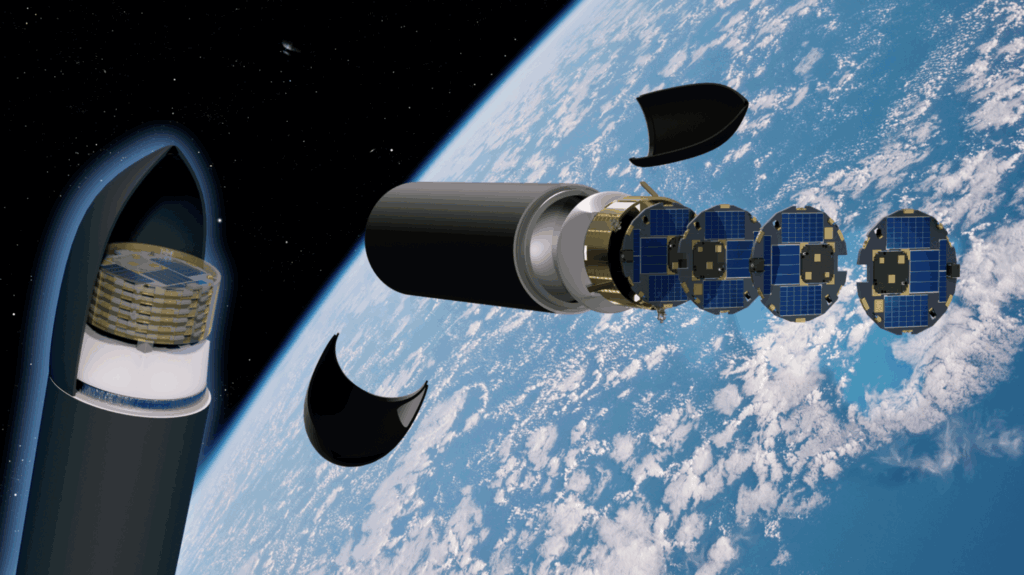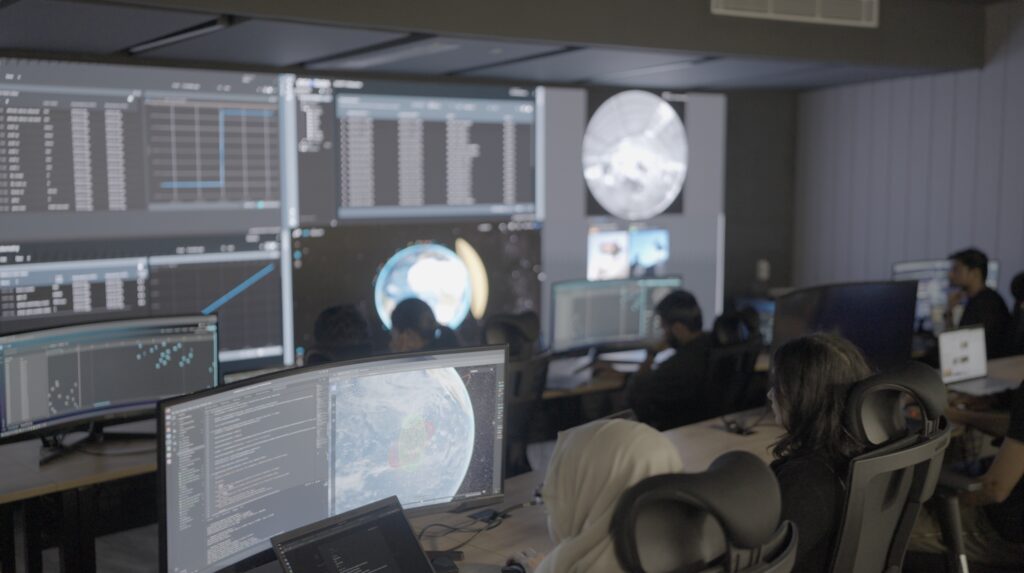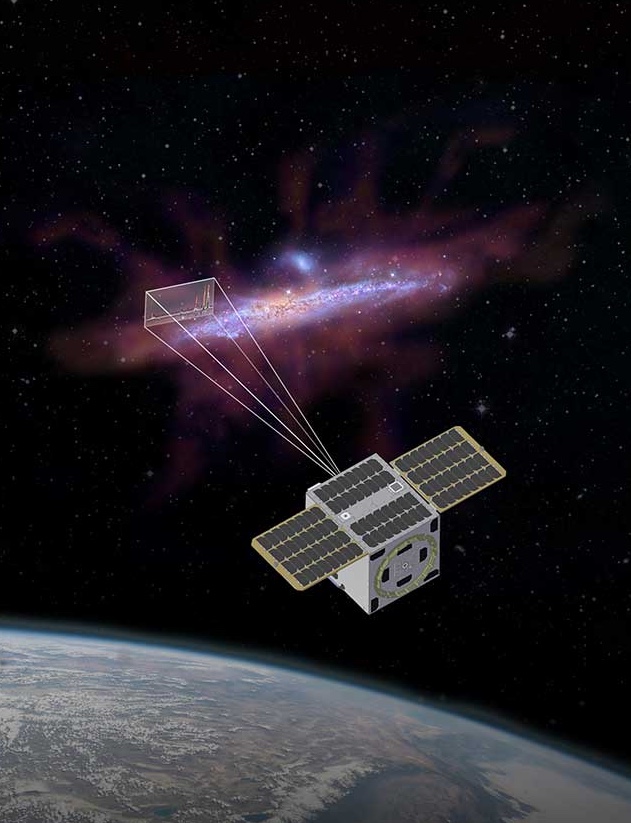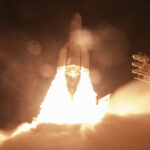Now Reading: China launches first of 2,800 satellites for AI space computing constellation
-
01
China launches first of 2,800 satellites for AI space computing constellation
China launches first of 2,800 satellites for AI space computing constellation
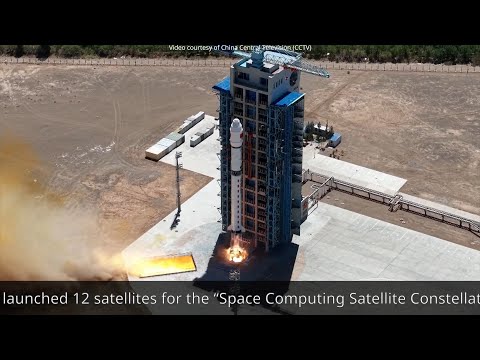
HELSINKI — China launched 12 satellites early Wednesday for an on-orbit computing project led by startup ADA Space and Zhejiang Lab.
A Long March 2D rocket lifted off at 12:12 a.m. Eastern (0412 UTC) May 14 from Jiuquan Satellite Launch Center in northwest China. Insulation tiles fell away from the payload fairing as the rocket climbed into a clear blue sky above the spaceport.
The China Aerospace Science and Technology Corporation (CASC) announced a fully successful launch, revealing the mission to have sent 12 satellites for a space computing constellation into orbit.
Commercial company ADA Space released further details, stating that the 12 satellites form the “Three-Body Computing Constellation,” which will directly process data in space, rather than on the ground, reducing reliance on ground-based computing infrastructure. The constellation will be capable of a combined 5 peta operations per second (POPS) with 30 terabytes of onboard storage.
The satellites feature advanced AI capabilities, up to 100 Gbps laser inter-satellite links and remote sensing payloads—data from which will be processed onboard, reducing data transmission requirements. One satellite also carries a cosmic X-ray polarimeter developed by Guangxi University and the National Astronomical Observatories of the Chinese Academy of Sciences (NAOC), which will detect, identify and classify transient events such as gamma-ray bursts, while also triggering messages to enable followup observations by other missions.
ADA Space claims the 12 satellites represent the world’s first dedicated orbital computing constellation. This marks a shift from satellites focused solely on sensing or communication to ones that also serve as data processors and AI platforms.
The constellation is part of a wider “Star-Compute Program,” a collaboration between ADA Space and Zhejiang Lab, which aims to build a huge on-orbit network of 2,800 satellites.
The company says the constellation can meet the growing demand for real-time computing in space, as well as help China take the lead globally in building space computing infrastructure, seize the commanding heights of this future industry.
The development could mark the beginning of space-based cloud computing as a new capability, as well as open a new arena for strategic competition with the U.S. The ability to reduce bottlenecks for data from space and other capabilities could have potential economic, scientific and military implications. While the U.S. and Europe have tested edge computing in space, China’s collaborative effort appears to be the first to deploy a purpose-built AI constellation at scale.
ADA Space, full name Chengdu Guoxing Aerospace Technology Co., Ltd., was established in 2018 and focuses on AI-driven satellite technology and space-based computing. In January it filed for an initial public offering on the Hong Kong Stock Exchange.
Zhejiang Lab, in Hangzhou, was established in September 2017 as a collaboration between the Zhejiang provincial government, Zhejiang University and Alibaba Group. The aim is to advance China’s capabilities in fields such as AI, intelligent computing and big data.
The Star-Compute Program also involves partnerships with a range of companies including SoftStone and Kepu Cloud, which will contribute to the development of ground-based computing centers and AI platforms that complement the space-based components of the initiative.
The program could play into China’s national “New Infrastructures” initiative, as well as the country’s aim to be the global AI leader by 2030, with space as a potential arena in which this can be applied.
The mission was China’s 26th orbital launch attempt of the year. It follows the TJS-19 and Yaogan-40 (02) missions in recent days, lifting off from Xichang and Taiyuan spaceports respectively.
A Zhuque-2E launch is scheduled for early Thursday (May 15) from Jiuquan, with a Ceres-1 solid rocket set to launch from a sea platform off the coast of Shandong province May 19. A Long March 7A from Wenchang is expected May 20, and a Kinetica-1 solid rocket to follow from Jiuquan May 21.
The launch of the Tianwen-2 near Earth asteroid sample return and main belt comet mission from Xichang spaceport is scheduled between May 28-30.
Stay Informed With the Latest & Most Important News
Previous Post
Next Post
-
 012024 in Review: Highlights from NASA in Silicon Valley
012024 in Review: Highlights from NASA in Silicon Valley -
 02Panasonic Leica Summilux DG 15mm f/1.7 ASPH review
02Panasonic Leica Summilux DG 15mm f/1.7 ASPH review -
 03From Polymerization-Enabled Folding and Assembly to Chemical Evolution: Key Processes for Emergence of Functional Polymers in the Origin of Life
03From Polymerization-Enabled Folding and Assembly to Chemical Evolution: Key Processes for Emergence of Functional Polymers in the Origin of Life -
 04How New NASA, India Earth Satellite NISAR Will See Earth
04How New NASA, India Earth Satellite NISAR Will See Earth -
 05And Thus Begins A New Year For Life On Earth
05And Thus Begins A New Year For Life On Earth -
 06Astronomy Activation Ambassadors: A New Era
06Astronomy Activation Ambassadors: A New Era -
07SpaceX launch surge helps set new global launch record in 2024













